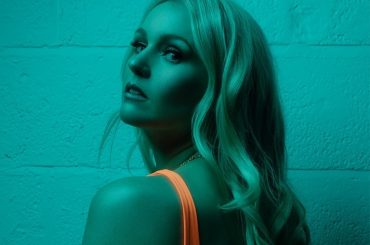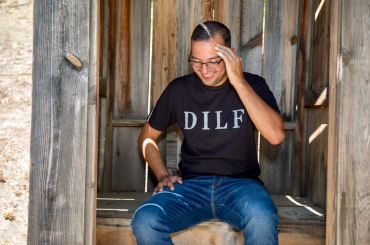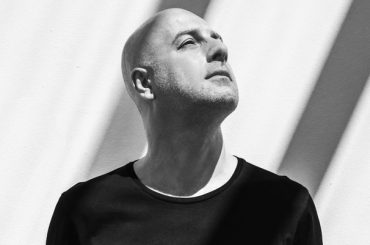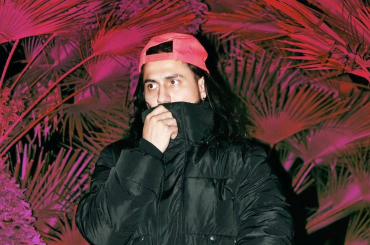When the Coronavirus shut us down, clubs and festivals ceased, and everyone was essentially forced inside with no definitive end in sight, DJ Times wondered: How is our tribe coping? How are DJs getting by?
So, we sent out our “Coronavirus Questionnaire” to DJ/producers from all musical genres to find out. During this period, DJ Times will continue presenting the questionnaire responses from talented music-makers from all over the world. Here’s our latest entry, this time from South Florida, the Miami Beach-based electronic talent Mike Hiratzka.
What’s it been like where you’re living? I live in Miami Beach. Thankfully, we have nice weather most of the time… so even during the worst parts of quarantine, we were still able to be outside and maintain some sense of normalcy.
Have you learned anything during the downtime? I’ve spent a lot of time working on the social-media aspects of the music industry, learning about new avenues of promotion, how to make better videos for YouTube and Instagram… basically, how to reach more listeners and keep them engaged with my music.
What are you doing now that’s ultimately constructive to your music life/career? For example, any releases during this period? At the end of 2019, I was planning on taking some time off from touring and working for other artists to finish writing my album. I spent the last decade on the road as a music programmer and playback engineer with Justin Timberlake, Rihanna, Hugh Jackman, Evanescence, Charlie Puth, Toni Braxton and Akon. When the pandemic hit, I ended up with enough time to write more than two albums worth of music. So, my debut solo album, Nish, just came out on my new label, Nish Recordings. It’s been a new direction for me, musically, that has been definitely impacted by the pandemic and quarantine life. The music is introspective, deep and chilled-out, more like a movie soundtrack than the club music that people might expect from me. I didn’t feel like writing music for dancefloors or clubs that were empty around the world. There are some more clubby tracks coming out later on this year, as clubs hopefully start to reopen.
In the studio, what’s your set-up? I have a hybrid analog/digital studio with: a bunch of analog synths – a Sequential Prophet-5, Moog Subsequent 37, Korg Minilogue, vintage Korg MS-20 and Moog Prodigy; a Eurorack Modular with modules by Make Noise, Intellijel, Qu-Bit, Mutable Instruments, Batumi and Expert Sleepers; electric and acoustic guitars by Fender, Gretsch, Nash, and Guild; a vintage Music Man electric bass; several dozen guitar pedals – I may or may not have a pedal problem; and lots of percussion instruments that I have collected from around the world.
I have collected gear for years and years, with a focus on having cool sound sources and a great signal chain to capture them. I record everything through API or Thermionic Culture preamps, or Rupert Neve Designs (RND) direct boxes, through RND or Thermionic Culture EQs into Pro Tools on my MacBook Pro and mix through a RND 5060 Centerpiece console. I have Universal Audio and Antelope Audio converters clocked with an Antelope Audio 10M, recording everything at 96 KHz, with the 5060 summing 32 analog outputs.
Lead vocals were recorded with a Dave Pearlman TM-1 tube mic into the API pre/RND EQ chain, then through a Warm Audio WA76 into WA-2A to do the classic 1176/LA-2A compression technique. I have a mix of tube, condenser and dynamic mics – Warm Audio 251, Avantone CV-12, Neumann TLM-103 and Shure 57 and 58 – that are always up in the room so that I can capture any sound source at a moment’s notice. The mix bus inserts of the 5060 usually are pair of Warm Audio EQP-WA Pultec-style EQs sent into a RND Portico II Master Buss Processor. I sometimes use an SPL Vitalizer MK2-T for widening and tube vibe.
I have a very extensive plug-in collection, and mainly rely on favorites from Spitfire Audio, UAD, Soundtoys, Waves and FabFilter, though I have and regularly use plug-ins from many other manufacturers, including Arturia, Native Instruments, Output, Ina GRM, Eventide, Brainworx, oeksound, Spectrasonics, iZotope, Waldorf, Newfangled Audio, Valhalla, Wavesfactory, Sonnox, McDSP, Sugar Bytes and Synchro Arts.
What’s your creation process in the studio? I have set up my studio so that I can record any instrument within a minute or two with minimal patching. That way I can stay in the moment and move from, say, piano to guitar to drum machine to electric bass to synth very quickly and fluidly. It’s an inspiring way to work and keeps things flowing. A lot of the songs on my album were written with the core elements recorded in just a few takes, in great part because of that process and the spontaneity that it provides.
What’s your typical DJ set-up? I’m currently using a couple of Pioneer CDJ-1000s and a Soundcraft/UREI mixer. I’m moving to a new place soon and am considering an upgrade to a Pioneer DDJ controller. I really like the looping possibilities, compact footprint and portability.
What’s the most surprising thing you’ve realized during this period of social distancing? How many awesome TV shows are available online that I’ve never heard of before. Thanks, Netflix!
Have you done anything online recently? Have you seen any DJ video streams that impressed you? My buddy Dave Dresden from Gabriel & Dresden has been rocking it on Twitch. It makes me want to do it as well once I’m done with album-related obligations and starting my new record label. John Digweed’s Bunker Sessions are awesome.
Any theme tunes recommended for the moment? Radiohead’s “Everything in Its Right Place.”
Any advice on staying sane & relatively positive through this situation? Focusing on staying creative and productive throughout the pandemic, plus a healthy mix of daily exercise, cooking a lot, and honing my cocktail-making skills has kept me going.
To check out more Life in Lockdown interviews, click here.
DJ Times Magazine is copyright © 2021 by DJ Publishing, Inc. www.djtimes.com








